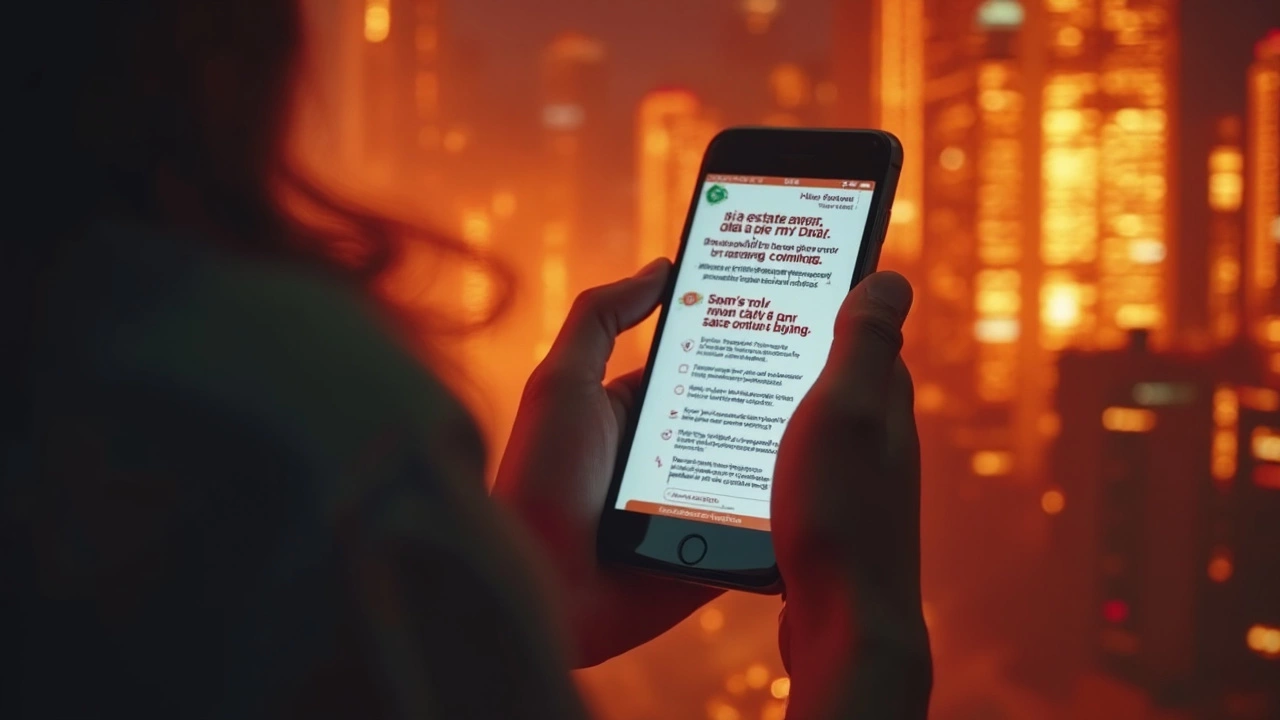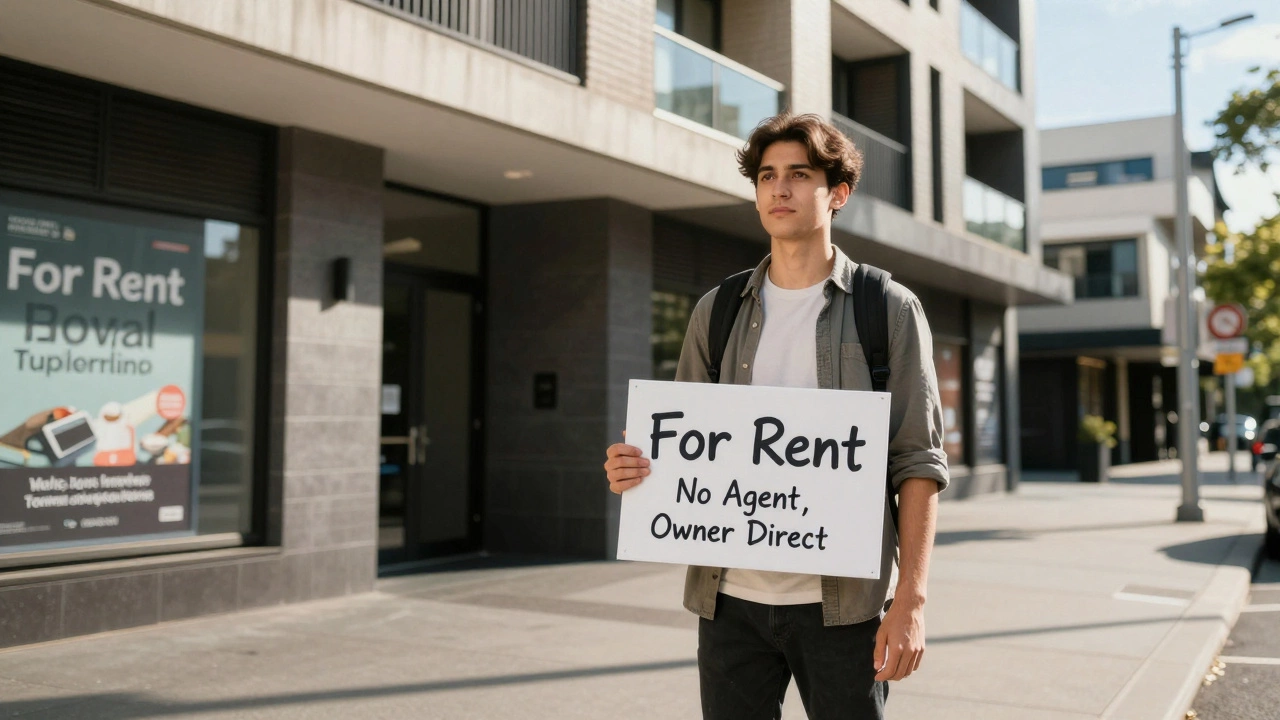You don’t have to drag yourself from house to house with a sweaty real estate agent anymore. These days, you can actually buy a house using nothing but your laptop or even your phone. People are skipping the open houses, negotiating by text, and signing papers on the couch. The process is way faster, but it’s not all sunshine—there are risks, and some steps are just plain confusing.
Here’s the thing: you can find listings, take 3D tours, chat with sellers, and handle a ton of paperwork without seeing the house in person. Tech platforms like Zillow, Redfin, and Realtor.com let you filter homes, set alerts, and even book virtual showings. Digital mortgage lenders offer quick approvals after just a few clicks. It feels surreal, but this is the new reality for thousands of buyers, especially since 2020 when everything went remote.
But clicking ‘buy now’ on a house isn’t the same as ordering shoes online. You’re dealing with huge sums of money, legal contracts, and a lot of emotion. Some things—like seeing the neighborhood in real life or double-checking the plumbing—still matter. Before you jump in, it’s smart to know where you need to slow down or ask for help.
- How People Actually Buy Houses Online
- Virtual Tours and Digital Paperwork
- Online Payments and Escrow: Is It Safe?
- Red Flags: Avoiding Scams and Costly Mistakes
- Tips for a Smooth Digital Home Purchase
How People Actually Buy Houses Online
The idea of buying a house online feels like science fiction, but it’s totally real—and getting way more common. Most buyers start by scrolling through property listings on big sites like Zillow, Realtor.com, and Redfin. You set your filters, see dozens of houses in seconds, and save your favorites. Some buyers never even meet their real estate agent in person.
Here’s what the usual buy house online process looks like:
- Find a property: Start with digital listings, virtual maps, and 3D tours. Some platforms let you see exact floor plans and even peek at a home’s street using Google Street View.
- Contact the seller or agent: Many sites have instant chat or automated scheduling. Agents often do video walkthroughs, so you can ask questions or focus on issues like mold or water pressure—stuff you’d usually check in person.
- Make an offer: Offers and negotiations are handled online, through email or special apps. You upload documents and sign them electronically—no snail mail or piles of paper anymore.
- Home inspections, done virtually: Some buyers book inspectors on video, who livestream their findings or send detailed reports with photos and videos.
- Digital closing: You handle mortgage applications, title insurance, and final signatures using secure online tools. Notaries even meet you over video to confirm your ID before you e-sign.
According to the National Association of Realtors, nearly 97% of homebuyers now use the internet at some point in their home search. As Jim Tosta, a well-known real estate broker, put it:
"Five years ago, remote closings were rare. Now, for tech-savvy buyers, handling everything online is just expected."
What’s key is that every step of buying property online is designed to be as simple as possible, but there are still official check-ins for things like legal paperwork and payments. Nothing gets finalized until all parties sign off. But yes, people really are buying houses without ever setting foot in them.
Virtual Tours and Digital Paperwork
If you’re wondering how people check out a home without stepping inside, it’s all about virtual tours. Over 75% of home listings on major sites now come with video walk-throughs or 360-degree tours, according to a 2024 report by the National Association of Realtors. Some agents even offer live video calls so you can ask questions in real time as they walk through a property. This means you can spot cracks, look at kitchen appliances, and even peek into closets—from anywhere.
Besides the visuals, most real estate platforms now let buyers download inspection reports, review floor plans, and see neighborhood data all online. This saves hours of back-and-forth emails. Worried about missing something important? Some platforms flag disclosures, so you won’t miss out on issues like flood zones or old electrical wiring.
The real game-changer is paperwork. Signing stacks of documents used to mean printing, scanning, or mailing. Not anymore. With e-signature tools like DocuSign and Adobe Sign, you can close deals without ever picking up a pen. Most U.S. states accept digital home sale contracts as legally binding since 2020, thanks to updates in electronic signature laws.
Let’s break down what’s usually handled online now:
- Offer letters
- Counteroffers and negotiation details
- Purchase agreements and disclosures
- Inspection reports and repair requests
- Final closing documents
Here’s a quick look at how shoppers use virtual tours and paperwork tools as of May 2025:
| Activity | Done Online (%) |
|---|---|
| Initial property tour | 81% |
| Reviewing documents | 93% |
| Submitting offers | 87% |
| Signing closings contracts | 92% |
If you’re aiming to buy house online, virtual tours and digital paperwork take out a ton of the old hassle. Just don’t forget—if you see something weird or sketchy, ask questions, and don’t sign anything you’re not 100% sure about.

Online Payments and Escrow: Is It Safe?
Paying for a house online might seem wild, but it’s already pretty common. Still, you want to be super careful here—nobody wants their life savings to vanish with one click. Most legit deals use an escrow service, which is basically a neutral third party holding the money until everything’s squared away.
Here’s how it usually works: once you and the seller agree on a price, you wire your payment to the escrow company, not directly to the seller. The escrow team hangs onto the cash while everyone makes sure the paperwork, inspections, and loan approval all pan out. Only after all the boxes are checked does escrow release your payment to the seller. It’s a built-in safety net, and it’s been the standard for both in-person and online deals in the US for a long time.
But there are risks. Wire fraud is a big one—scammers sometimes email fake instructions so you send your money to the wrong account. The FBI reported over $896 million lost to real estate cyber scams in 2023 alone. Double-check bank details you get in email, and call your escrow agent on a known phone number before moving any money.
- Use only well-known escrow or title companies. Google them, check reviews, and make sure they’re licensed in your state.
- Always confirm payment instructions by phone, not just email.
- Don’t trust last-minute changes to wire info. Treat those as major red flags.
Digital payments go through encrypted, secure channels—think DocuSign for contracts and verified bank wire services for big transfers. Home buyers have successfully closed deals worth hundreds of thousands, even millions, all online this way. But you need to be sharp, and don’t skip any security steps.
Whether you’re using the internet to buy house online or just handling deposit money, do your homework. If something feels off, hit pause and get advice from your agent or lender, stat. It’s your money—make sure it lands in the right hands.
Red Flags: Avoiding Scams and Costly Mistakes
Online home buying comes with landmines. In 2023 alone, the FBI’s Internet Crime Complaint Center reported more than $446 million lost to real estate fraud in the U.S. That’s not just hackers in hoodies—sometimes scams look like legit listings or smooth-talking “agents.” Anyone shopping for property online needs a solid list of warning signs.
- buy house online listings with prices way below the local average
- Sellers that only want to communicate by email or WhatsApp, not through the site or phone
- No street address or super-vague photos (think “stock image” vibes)
- Requests for wire transfers or cryptocurrency payments up front—big red flag
- Pressure for you to skip inspections or any paperwork
Your safest bet is sticking with trusted real estate platforms and double-checking that agents have an active license (every state lets you look this up early). When in doubt, Google the name, company, and even the property address. Does it show up on more than one site? Does the agent have recent reviews?
If someone asks you to send money for a background check, “processing” fee, or to “hold” the place, take a step back. Most real estate pros will never rush you into sending cash before paperwork is set. Also, be wary of fake escrow sites. Attackers have made websites that look almost identical to actual escrow companies, hoping buyers won’t notice.
| Type of Scam | What to Watch for | Prevention Tip |
|---|---|---|
| Fake Listings | Deals too good to be true | Search address online/speak with local agents |
| Phishing Emails | Sudden wiring instructions change | Call your agent/title company directly |
| Illegit Agents | No real ID, pushy, no references | Verify licenses with state department |
| Fake Escrow | Sent to unknown website for payment | Triple-check escrow details with agent |
Remember, any legit homebuying process—online or off—gives you time for a home inspection and doesn’t demand secretive payments. When something feels off, trust your gut and hit pause. Losing out on a hot deal stings less than losing thousands to fraud.

Tips for a Smooth Digital Home Purchase
If you’re planning to buy house online, it’s smart to have a plan. There’s a lot more you can do than just click around on home listings. Little steps can help you dodge headaches and save money.
- Verify the Agent or Platform: Always double-check who you’re dealing with. Reputable platforms like Zillow or Realtor.com do background checks, but private sellers or new agents need a little more digging—Google them, check reviews, and see if they’re licensed with official state boards.
- Get Pre-Approved Digitally: Lenders like Rocket Mortgage and Better.com can pre-approve you online, often within 24 hours. This helps you jump on hot properties before someone else snaps them up.
- Use Video Calls and Virtual Tours: Ask your agent for live walkthroughs using Zoom or FaceTime, not just those glossy 3D tours. Don’t be shy about asking them to zoom in on problem spots—water stains, bad tiling, or old appliances.
- Hire a Remote Inspector: Home inspectors now offer video reports. Most will send you a full PDF the same day, with photos and detailed notes.
- Double-Check Legal Stuff: Digital document signing platforms like DocuSign are fast, but mistakes happen. Take your time reading legal terms before you e-sign anything.
- Secure Your Payment: Never wire money until you’ve called the title company and confirmed the account. Wire fraud in real estate is on the rise.
- Mind Your Data Security: Use strong passwords on all your property-related accounts and turn on two-factor authentication where you can. Hackers target big transactions.
One big stat from the National Association of Realtors in 2024: 48% of buyers said they’d be comfortable buying a home after just a virtual tour and video chat with an agent—up from only 19% five years ago. That’s a pretty massive jump in trust.
| Step | Average Time (Days) | Done Completely Online? |
|---|---|---|
| Mortgage Pre-Approval | 2 | Yes |
| Home Tour (Virtual) | 1 | Yes |
| Offer Submission | 1 | Yes |
| Inspection | 4 | Mostly |
| Signing Paperwork | 1 | Yes |
One more tip: if you’re nervous, there’s nothing wrong with flying out to see the house before closing, even if you do everything else online. And always talk to your lender and agent before making big decisions over email.





